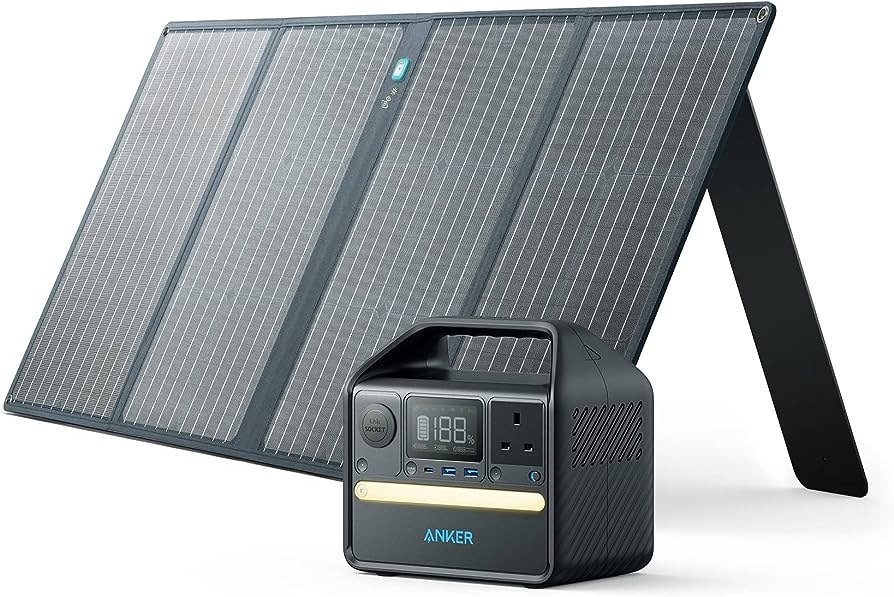In an age where supportability and clean energy solutions are picking up vital significance, solar power generators have developed as a progressive innovation. Saddling vitality from the sun’s beams, these generators offer a renewable and eco-friendly elective to conventional fossil fuel-based control sources. But how precisely do solar power generators work? Let’s dig into the method and demystify this momentous innovation.
The Basics of Solar Power Generation
At the center of a solar power, generator are photovoltaic (PV) cells, commonly known as solar panels. These boards are composed of semiconductor materials, such as silicon, which have the one-of-a-kind capacity to change over daylight specifically into power through the photovoltaic impact.
The Photovoltaic Effect
The photovoltaic impact could be a wonder where certain materials can create an electric current when uncovered to light. In a solar panel, this handle is encouraged by the interaction between photons, which are particles of light, and the electrons inside the semiconductor fabric. When photons strike the surface of the solar panel, they exchange their vitality with the electrons, permitting them to move and produce an electric current. This current is at that point captured and tackled for different vitality needs.
From Sunlight to Usable Electricity
The process of converting sunlight into usable electricity involves several key steps:
- Absorption: Solar panels are designed with layers of semiconductor material that efficiently absorb sunlight. The photons from sunlight interact with the electrons in these materials, causing them to become energized.
- Creation of Electron-Hole Pairs: As the absorbed energy elevates the energy levels of electrons, they break free from their atoms, leaving behind “holes.” These energized electrons and holes are essential for generating an electric current.
- Electric Field Formation: The structure of the solar panel includes an electric field, which is created by the separation of differently charged particles – the free electrons and the positively charged holes.
- Induction of Current: With the electric field in place, the energized electrons are forced to move towards the front surface of the solar panel, while the holes move towards the back surface. This separation creates an imbalance of charge, resulting in the generation of direct current (DC).
- Inverter Conversion: Since most household appliances and electrical systems operate on alternating current (AC), the DC generated by the solar panels is passed through an inverter. The inverter converts the DC into AC, making it compatible with regular electricity systems.
- Energy Distribution: The AC electricity produced by the solar power generator can now be used to power homes, businesses, and various devices. Any excess energy can be fed back into the grid or stored in batteries for later use.
Benefits of Solar Power Generators
Solar power generators offer a plethora of advantages that make them a compelling choice for both individuals and businesses:
- Clean and Renewable: Solar energy is a renewable resource, meaning it won’t deplete over time. It also produces no greenhouse gas emissions, contributing to a cleaner environment.
- Reduced Energy Bills: By generating your own electricity from sunlight, you can significantly lower your monthly energy bills and potentially even earn money by selling excess energy back to the grid.
- Low Maintenance: Solar panels have minimal moving parts, translating to lower maintenance requirements and costs compared to traditional power generation methods.
- Energy Independence: Solar power grants individuals and communities greater energy independence by reducing reliance on external energy sources and volatile fuel prices.
- Long Lifespan: Quality solar panels can last for several decades, providing a long-term and reliable energy solution.
Embracing Solar Power for a Sustainable Future
As the world continues to transition towards feasible energy solutions, solar power generators have taken center to arrange. By understanding the complex preparation through which these generators work, able to way better appreciate the technology’s potential to revolutionize the way we produce and expend energy. As innovation progresses and economies of scale drive down costs, solar power is balanced to play an indeed more noteworthy part in forming a cleaner and greener future.
Components of a Solar-Powered Generator
A solar-powered generator might appear like a simple gadget, but it’s a modern system composed of a few key components working in agreement to convert daylight into usable power.
Solar Panels (Photovoltaic Cells)
At the center of a solar-powered generator are the sun-oriented boards, moreover known as photovoltaic cells. These panels are made up of semiconductor materials, as a rule, silicon, which retains sunlight and changes over it into electrical vitality through the photovoltaic impact.
Battery Bank
In off-grid or crossover solar systems, vitality produced amid sunny periods might surpass prompt request. Battery banks store this excess energy for utilization amid cloudy days or at night, giving a persistent control supply.
Advancements in Solar Power Technology
The field of solar power technology continues to evolve, with progressing investigations pointed at progressing proficiency, diminishing costs, and improving the supportability of solar energy vitality. Developing advances, such as thin-film sun-powered cells, concentrating sun-based control frameworks, and perovskite solar cells, hold a guarantee of indeed more proficient and available solar power generation in the future.
Conclusion
In conclusion, the method behind solar power generation could be an intriguing interaction of science, innovation, and natural awareness. By tackling the abundant energy of the sun, solar power generators offer a clean and renewable vitality source that has the potential to convert our world. As we proceed to investigate imaginative ways to meet our vitality needs, sun-oriented control stands out as a guide of trust for a more feasible future.
